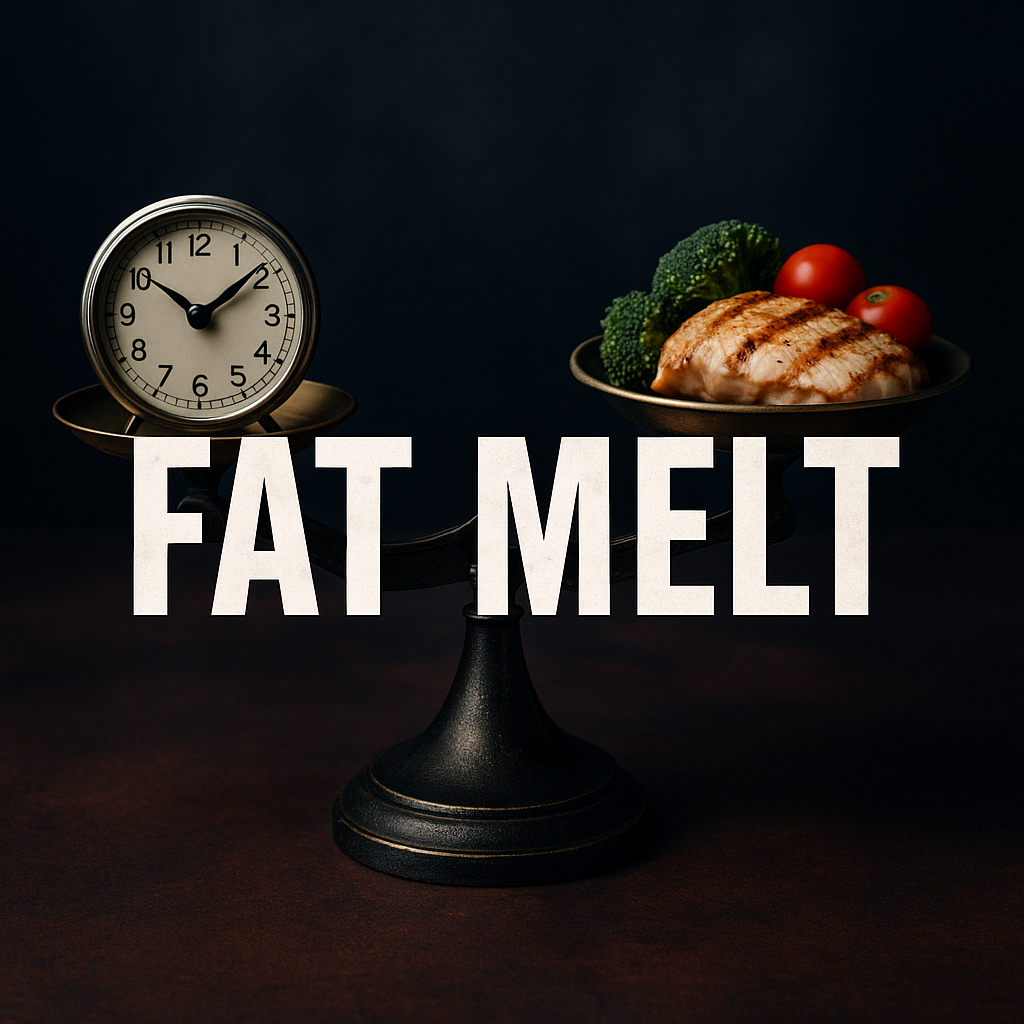
Fasting vs Dieting: Why Protein Pacing Crushes Calorie Cutting
Share ❤️
Losing weight isn’t hard — keeping muscle while torching visceral fat is hard. Many people slash calories and watch the scale slide, only to discover they’ve cannibalised muscle and still carry a gut. Visceral fat wraps around your organs and fuels inflammation, diabetes and heart disease. A new study pitted two strategies head‑to‑head: intermittent fasting combined with protein pacing (IF‑P) versus traditional caloric restriction (CR). The goal wasn’t to starve anyone; it was to see whether when and how you eat matters as much as how much you eat. The results will make you question every diet plan you’ve followed.
What Is IF‑P?
Intermittent fasting with protein pacing cycles between periods of not eating and eating windows where protein is distributed evenly across meals. In the study, participants fasted for longer stretches (similar to a 16:8 or 5:2 approach) and then consumed meals that delivered around 30 % of calories from high‑quality protein. This protocol preserves muscle, keeps metabolism humming, and switches the body into fat‑burning mode during fasts. Picture your metabolism as a campfire: fasting lets the wood burn down the fat logs, while protein pacing adds just enough kindling to keep muscle flames alive.
What Is CR?
Caloric restriction is the classic “eat less” strategy. You simply reduce daily calories — usually 20 % to 30 % below maintenance — across balanced meals. There is no special timing; the only rule is that your total intake stays under a set number. People often lose weight at first, but hunger ramps up, muscle mass declines, and the body adapts by slowing energy expenditure. CR is like trying to save money by cutting a bit from every category without changing your spending habits; you see short‑term savings but no fundamental shift.
Head‑to‑Head
Effectiveness: The nine‑week trial measured weight, total fat, visceral fat and muscle mass. Both groups consumed roughly the same weekly calories, yet IF‑P was far more effective. Participants lost about 9 % of their body weight with IF‑P versus 5 % with CR. Total body fat dropped 16 % compared with 9 %. Most dramatic was visceral fat: IF‑P shaved off 33 %, while CR managed just 14 %. IF‑P also increased fat‑free mass by 6 %, double the 3 % in CR. In other words, fasting with protein pacing melted belly fat while sparing muscle.
Ease & Hunger: People fear fasting will leave them ravenous. The study shows the opposite. Desire to eat fell by 17 % in the IF‑P group compared to virtually no change (1 %) in CR. Structured fasting appears to tame hunger hormones and stabilise blood sugar, whereas constant grazing keeps them spiking. If you’ve ever felt “hangry,” you know which side you prefer.
Cost & Convenience: CR seems simple: count calories and eat less. Yet constant tracking is tedious and social situations become minefields. IF‑P demands discipline in timing, but eliminates the need to micro‑manage every bite. You schedule eating windows (for example, noon to 8 p.m.) and prioritise protein during meals. There’s no need for expensive supplements or fancy apps. Both diets in the study included similar activity levels and calorie totals, so the differences boiled down to structure.
So which strategy wins? If you want to lose fat quickly, especially the dangerous kind around your organs, and keep your muscle, intermittent fasting with protein pacing is the clear champion. If you prefer steady, moderate weight loss and find fasting psychologically challenging, a heart‑healthy caloric restriction plan might suit you. And here’s the twist: both approaches only work if you commit for the long haul. Don’t expect nine weeks to erase years of metabolic abuse. Use the study as motivation to experiment. Consult a professional before making drastic changes, and remember: when you respect your body’s rhythms, it respects you back.
I tell my clients: people who chase wellness trends are always late to the party; those who create them live forever. Are you ready to ditch mindless dieting and try a structured approach that could melt your visceral fat? Share your experience below — the real test begins now.










